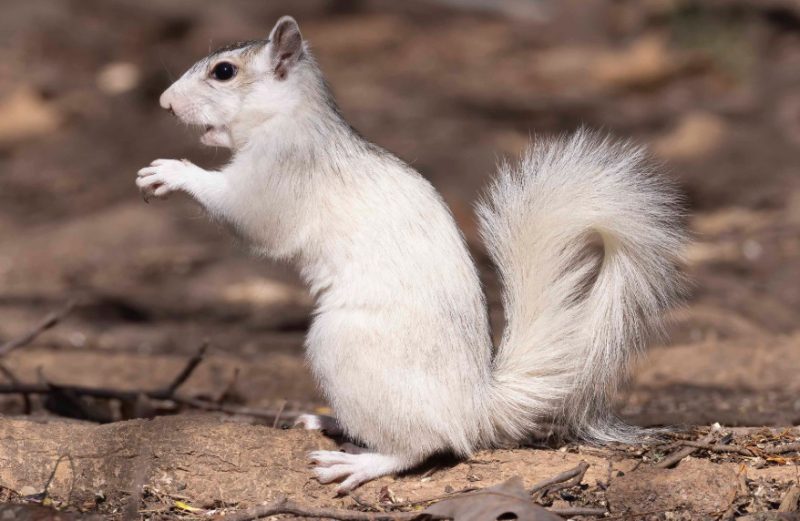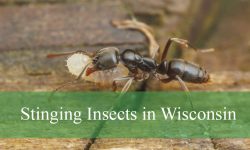Ohio is home to a remarkable and rare phenomenon: white squirrels. These striking creatures stand out with their snowy fur, capturing the attention of anyone lucky enough to spot them. Their unusual appearance has made them a celebrated part of Ohio’s wildlife.
Often mistaken for albino squirrels, most of Ohio’s white squirrels are actually leucistic Eastern gray squirrels. This means they have reduced pigmentation, giving them a bright white coat while retaining normal-colored eyes. This subtle difference makes them unique compared to true albinos.
The presence of white squirrels in Ohio has sparked curiosity and admiration among both residents and visitors. From local parks to quiet neighborhoods, these enchanting animals add a touch of wonder to everyday life and inspire people to learn more about their habits and habitats.
Understanding White Squirrels

What Are White Squirrels?
White squirrels are not a separate species but rather a striking color variation of the Eastern gray squirrel (Sciurus carolinensis). This unique appearance is caused by a genetic mutation that affects pigmentation, resulting in fur that is completely or mostly white. Unlike true albino squirrels, which lack all pigmentation and have pink or red eyes, most white squirrels in Ohio are leucistic. Leucism is a condition that reduces pigmentation while leaving the eyes their natural dark color, giving these squirrels their distinctive yet natural look.
The whiteness of these squirrels is purely cosmetic and does not affect their behavior or biological functions. They share the same physical traits, diet, and habitat preferences as their gray relatives, yet their snow-white fur makes them exceptionally eye-catching in the wild. This rare genetic variation has fascinated wildlife enthusiasts, researchers, and photographers, making white squirrels a notable attraction in Ohio’s towns and parks.
The Rarity of White Squirrels
White squirrels are considered rare throughout their range, with sightings often being unpredictable. Their unusual coloration, while visually stunning, can make them more conspicuous to predators, potentially reducing their survival rates in the wild. Natural selection generally favors the gray-colored squirrels, which are better camouflaged in forests and suburban areas.
Despite these challenges, white squirrels have managed to maintain stable populations in certain Ohio communities. Urban and suburban environments, with abundant food sources and fewer natural predators, provide conditions where these squirrels can thrive. Over time, some towns in Ohio have even seen local populations grow, and the squirrels have become cherished symbols of the area. Their rarity and unique appearance continue to draw attention from locals and visitors, fueling curiosity and efforts to learn more about their biology and conservation.
The History of White Squirrels in Ohio
Early Sightings and Introductions
The history of white squirrels in Ohio is both fascinating and somewhat mysterious. The first documented introductions in the United States can be traced back to the early 20th century, though exact dates in Ohio are less clear. In 1949, a notable release of a pair of white squirrels occurred in Brevard, North Carolina. These squirrels interbred with local gray squirrels, gradually establishing a thriving white squirrel population. While this specific event happened outside Ohio, it inspired similar efforts and interest in introducing white squirrels to other areas, including several Ohio towns.
Local folklore and historical records suggest that early sightings in Ohio may have occurred around the same period, with communities noticing unusually pale squirrels in their parks and wooded areas. These early introductions, whether natural or intentional, laid the foundation for Ohio’s white squirrel populations. The rarity of these squirrels made each sighting an event, sparking curiosity and admiration among residents who began to regard these animals as unique symbols of local wildlife.
Growth of Populations
Over the decades, white squirrel populations in Ohio have steadily grown, particularly in towns that embraced their presence. Cities such as Oberlin and Kent have become well-known for their white squirrels, turning these rare creatures into local celebrities. In Oberlin, a small northern Ohio town, white squirrels are regularly spotted throughout parks, college campuses, and residential neighborhoods, where they have become an integral part of the community’s identity.
The growth of these populations can be attributed to a combination of factors. Urban and suburban environments provide abundant food sources, relatively few natural predators, and supportive human communities that celebrate the squirrels rather than view them as nuisances. In addition, breeding between white squirrels within these areas helps maintain the unique leucistic trait across generations. As a result, what was once a rare and sporadic sighting has become a cherished and consistent feature of Ohio’s natural landscape, drawing wildlife enthusiasts, photographers, and curious visitors alike.
Habitat and Behavior
Preferred Environments
White squirrels in Ohio thrive in environments that offer both safety and abundant resources. They are most commonly found in wooded areas, city parks, and suburban neighborhoods where mature trees provide shelter and nesting opportunities. These areas also supply ample food, making them ideal habitats for these unique creatures. Urban settings with minimal human disturbance allow white squirrels to move freely, forage efficiently, and maintain their populations without excessive risk from predators.
In addition to parks and residential zones, white squirrels are often spotted near college campuses and local landmarks, where large trees and green spaces mimic their natural woodland habitats. Such areas create a balance between protection and accessibility, helping these squirrels survive and adapt in regions where human activity is present but not overwhelming.
Diet and Feeding Habits
White squirrels share the same omnivorous diet as their gray counterparts. They consume a wide range of foods, including nuts, seeds, fruits, and fungi. Acorns, in particular, are a staple in their diet, providing essential nutrients and energy, especially during the colder months. By foraging and storing food, white squirrels not only sustain themselves but also contribute to the local ecosystem by dispersing seeds, which promotes forest regeneration and biodiversity.
Their foraging patterns are flexible, often changing with seasonal availability. During the spring and summer, they may feed on berries and young shoots, while in the fall, they focus on nuts and acorns to prepare for the winter months. These adaptive feeding habits allow them to thrive even in urban areas where natural food sources might fluctuate.
Social Structure
White squirrels exhibit social behaviors similar to other Eastern gray squirrels. While largely solitary outside of the breeding season, they can often be observed in small groups when resources are plentiful or during mating periods. Communication among these squirrels is complex and includes tail flicks, vocalizations, and scent marking, all of which help establish territories and maintain social bonds.
Breeding season brings heightened interaction, as males compete for mates and females care for their young in well-hidden nests. Despite their rarity, white squirrels integrate well into local squirrel communities, forming both temporary alliances and hierarchical structures that ensure survival and reproduction. Observing these behaviors provides fascinating insight into the adaptability and resilience of these distinctive animals.
Conservation and Challenges
Threats to Survival
Despite their remarkable adaptability, white squirrels in Ohio face numerous challenges that threaten their survival. Their striking white fur, while visually stunning, makes them highly visible to predators such as hawks, owls, and domestic animals. This increased visibility can reduce their chances of evading attacks compared to their gray counterparts, making predation a significant concern.
In addition to natural threats, human-related factors pose serious risks. Urban development has fragmented many natural habitats, reducing the availability of mature trees and green spaces essential for nesting and foraging. Road traffic further endangers these squirrels, as collisions with vehicles are a common cause of mortality. Environmental changes, such as harsh winters or reduced food availability, also add pressure to their populations, highlighting the need for proactive conservation measures to ensure these unique creatures continue to thrive.
Conservation Efforts
Recognizing the ecological and cultural value of white squirrels, several organizations and local communities in Ohio have implemented conservation programs. Efforts include habitat preservation, where parks and wooded areas are maintained or enhanced to provide safe nesting sites and reliable food sources. Public education campaigns also play a vital role, informing residents about the importance of protecting these squirrels and discouraging harmful practices such as feeding them inappropriate foods.
Monitoring programs are another key strategy, tracking squirrel populations and documenting trends in their health and reproduction. By fostering supportive environments and raising awareness, these initiatives aim to sustain and increase white squirrel populations across Ohio, ensuring that future generations can continue to enjoy these rare and captivating animals.
Cultural Significance
Symbolism and Folklore
White squirrels have become powerful symbols of uniqueness and resilience in Ohio communities. Local folklore often imbues them with mystical qualities, portraying them as harbingers of good luck or as magical creatures that bring fortune to those fortunate enough to spot them. Their rarity and distinctive appearance have inspired stories, legends, and community traditions, embedding these squirrels deeply into the cultural identity of the towns they inhabit.
Economic Impact
Beyond their symbolic significance, white squirrels have also contributed positively to local economies. Towns known for their white squirrel populations attract tourists, wildlife enthusiasts, and photographers eager to witness these rare animals in their natural habitats. This influx of visitors supports local businesses, including restaurants, shops, and accommodations, while fostering community pride. Annual events, festivals, and educational programs centered around white squirrels further enhance their economic and social impact, demonstrating how a single species can enrich both culture and commerce.
How to Spot a White Squirrel in Ohio
Best Locations for Sightings
White squirrels can be elusive, but Ohio offers several prime locations where sightings are more likely. Parks with dense tree cover, mature forests, and minimal human activity provide ideal habitats for these rare creatures. Urban green spaces, such as college campuses, arboretums, and residential neighborhoods with large trees, also attract white squirrels due to the availability of food and shelter.
Timing plays a crucial role in spotting white squirrels. Early mornings and late afternoons are the most active periods, as squirrels forage for nuts, seeds, and fruits while socializing with other members of their species. Visiting these areas during these hours increases the chances of observing their natural behaviors, including climbing, leaping between branches, and storing food for later.
Tips for Observation
To successfully observe white squirrels, it is important to approach quietly and patiently. Sudden movements or loud noises can startle them, causing the squirrels to retreat into the safety of trees. Using binoculars can help you get a closer look without disturbing their natural activities, and a camera allows you to capture their unique beauty.
Respecting their space is essential. Feeding white squirrels human food can disrupt their natural diet and may lead to health problems. Observing them from a safe distance ensures that they remain wild and healthy while allowing you to enjoy the experience responsibly. By following these tips, wildlife enthusiasts and casual visitors alike can increase their chances of witnessing the rare and enchanting white squirrels of Ohio.
Conclusion
White squirrels in Ohio are a testament to the state’s rich biodiversity and the wonders of nature. Their presence adds a touch of magic to the local landscape, captivating all who are fortunate enough to encounter them. By understanding and protecting these unique creatures, we can ensure that future generations will continue to marvel at their beauty and resilience.
FAQs About White Squirrels in Ohio
What Are White Squirrels?
White squirrels are a color variation of the Eastern gray squirrel (Sciurus carolinensis). Most are leucistic, meaning they have reduced pigmentation but retain dark eyes, unlike true albino squirrels which have red eyes.
Are White Squirrels Albino?
Not all white squirrels are albino. True albino squirrels lack all pigmentation and have red eyes. Most white squirrels in Ohio are leucistic, appearing white while their eyes remain dark.
Where Can I See White Squirrels in Ohio?
The best locations include towns with known populations, parks with dense tree cover, college campuses, and residential neighborhoods with mature trees. Oberlin and Kent are two of the most famous towns for spotting white squirrels.
When Is the Best Time to Spot White Squirrels?
Early mornings and late afternoons are ideal, as squirrels are most active during these times while foraging and socializing.
Are White Squirrels Endangered?
White squirrels are not considered endangered, but their rarity makes them vulnerable. Predation, habitat loss, and road traffic pose significant risks to their survival.
What Do White Squirrels Eat?
They are omnivorous, feeding on nuts, seeds, fruits, fungi, and occasionally insects. Acorns are a staple, especially in fall and winter.
How Can I Help Protect White Squirrels?
Supporting habitat preservation, avoiding feeding them human food, and educating others about their ecological importance are effective ways to help protect white squirrels. Local conservation programs also contribute to maintaining healthy populations.






